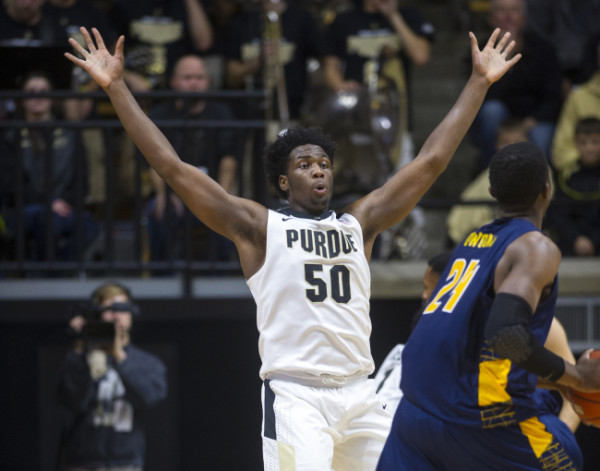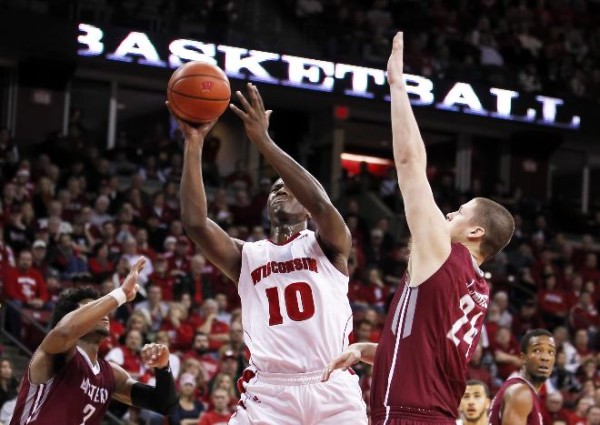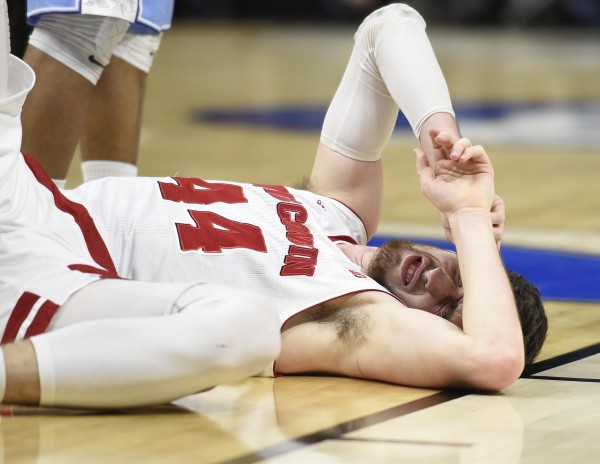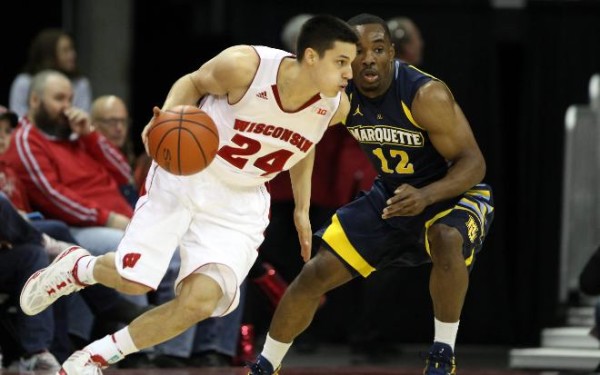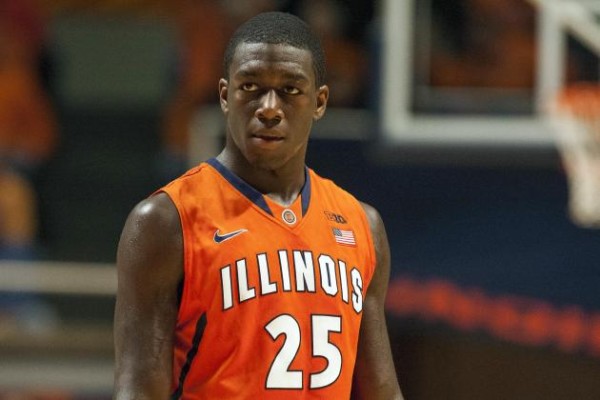Wisconsin’s Big Ten Title Hopes Depend on a Healthy Bronson Koenig
Posted by Tommy Lemoine on February 17th, 2017Wisconsin’s exclusion from the NCAA Selection Committee’s recent preview bracket left many analysts scratching their heads, especially those located in the upper Midwest. How could the Badgers — 21-3 and on top of the Big Ten — not even garner a top-four seed? Legitimate gripe or not, the consternation in Madison quickly shifted to a far more meaningful issue plaguing Wisconsin: Its offense simply hasn’t been very good lately, especially since point guard Bronson Koenig injured his calf in late January. After back-to-back losses to Northwestern and Michigan, it’s becoming increasingly clear that, while Big Ten Player of the Year candidate Ethan Happ can keep Greg Gard‘s offense afloat, a fully-healthy Koenig will be critical to their shot at a conference title.
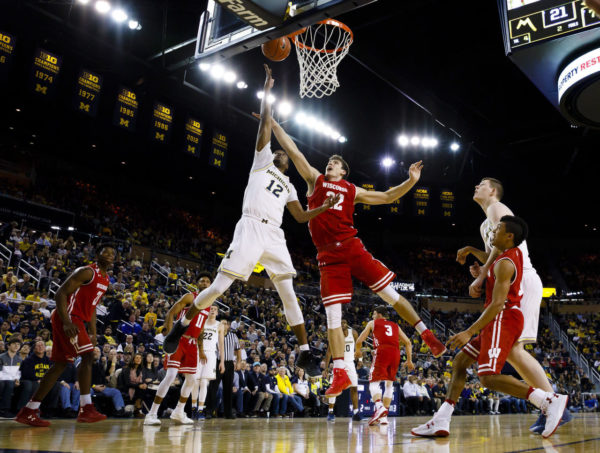
Ethan Happ can only do so much for Wisconsin without Bronson Koenig. (Rick Osentoski / USA TODAY Sports)
Since Koenig tweaked his calf against Penn State on January 24 (a seemingly minor issue at the time), Wisconsin has simply not been the same team. In the seven games leading up to his injury, the Badgers scored more than a point per possession (PPP) in six of those, including a 1.23 PPP effort at Indiana and a 1.33 PPP performance against Ohio State. In the six games since his mishap, Wisconsin has reached that threshold just once, and hasn’t topped 1.03 PPP at all (well below its season average). On Thursday night against Michigan, Gard decided to rule out Koenig in order to give him some extra rest; predictably, Wisconsin’s stagnation continued.
But why, exactly? After all, the Badgers have two all-conference caliber forwards in Nigel Hayes (13.6 PPG, 5.9 RPG) and Happ (14.2 PPG, 9.2 RPG), the latter of whom is undoubtedly the team’s best and most important offensive player. Entering Thursday night, Wisconsin was 16-0 when Happ finished the game with an offensive rating of 100.0 or better, and just 5-4 in games in which he didn’t. The 6’10” sophomore currently ranks among the Big Ten’s top-10 players in both offensive and defensive rebounding rate, assist rate, block rate, steals rate and free throw rate. His 60.6 percent effective field goal percentage is also among the league’s best, and he currently ranks fifth overall in KenPom’s National Player of the Year standings. Put more plainly, he’s a statistical monster, adept at carving out space in the paint and capitalizing on mismatches. “Happ is as good a pure post player as I’ve seen since I’ve been here,” Michigan head coach John Beilein said of the sophomore.





























